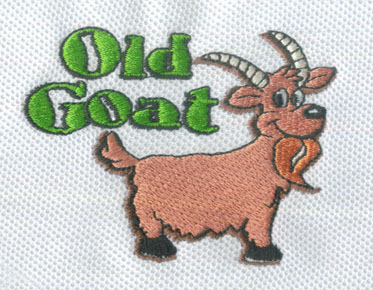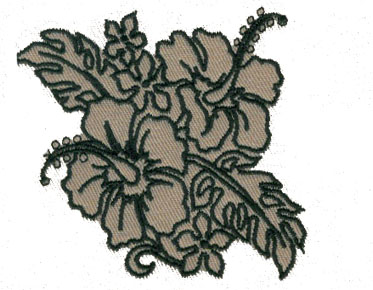Learn Embroidery Digitizing Tips and Tricks
It is important to understand the basic aspects of embroidery digitizing before you begin the process of digitizing the embroidery. First of all, you must learn how to import graphics and configure them based on your computer's commands. The next step is to learn how to transfer these files to the embroidery machine.
Embroidery digitizers must create the perfect stitching balance:
During the digitization process, the embroidery digitizer must create the best stitching balance. This is essential as the embroidery design may change as it is sewn. Some of the reasons for this shift are large thread areas, bulky fabrics and tight thread axes. Therefore, embroidery digitizers must consider the effect of push and pull when creating designs.
Embroidery digitizers must be familiar with the design and understand the intricacies of the digitizing process. When assigning stitch types, the embroidery digitizer must take into account fabric type and "push-pull". Every digital job is different and should be approached accordingly.
The perfect stitching balance is critical to the overall look of the design. It helps the design look smooth and even and also helps avoid unnecessary jumps. The jumps between facial features and other design parts should be small, and the digitizer should place them strategically. Stitch balance is critical for designs to look even and beautiful. The embroidery digitizer must also create the perfect balance of stitching, resulting in stunning embroidery designs. Distortion is another problem that plagues embroiderers. Frustratingly, many newbies get an unbalanced digital design. They either try to fix it by raising the hoop tension or gluing the clothes. Embroidery digitizers should practice increasing stitch density.
The embroidery digitizer must analyze the artwork:
Before starting the embroidery digitizing process, the embroidery digitizer must analyze the design to determine its stitching path and other parameters. The embroidery digitizer must evaluate the optimal stitching sequence, fabric type and size. They also had to choose the type of pins to use, as different pins would have different effects. After the embroidery digitizer understands the design, they can move on to creating the final embroidered artwork.
Digitizing embroidery is not an easy process. It takes experience and hours of practice to perfect this skill. The embroidery digitizer must first analyze the artwork, which may require resizing, removing outlines, or enlarging small text. It also takes time and experience to ensure the design is as expected. It is also essential to understand the limitations of the embroidery machine and medium to avoid mistakes.
Advantages of embroidery digitizing services:
There are many advantages to choosing an embroidery digitization service with a flawless reputation for high-quality work. Embroidery digitizers are highly skilled and experienced, so they will be able to check the stitches in the embroidery designs to make sure they are accurate. A well-trained embroidery digitizer will also provide quality service at a reasonable price. There are thousands of embroidery digitizers in the US alone, but you must choose a service with a good reputation. The process starts with an idea or artwork designed as an embroidery. The digitizer then converts the design into the appropriate file for the embroidery machine. Digitization involves using special embroidery software to digitize a logo or design into stitches. The digital file is then saved to disk, which the operator then inserts into the embroidery machine. The process takes quite a while, but the results are worth it.
Specify the stitch type:
The next step is to assign a stitch type to
the design. This is where the digitizer analyzes the artwork and determines
what type of stitch is needed. An incorrect stitching process can cause uneven
text or gaps in the fabric. Also, if the design is not patched correctly, it
may take longer to complete the design. The smoother the design, the less time
the embroidery machine will take to complete it.
Learn about the requirements:
Embroidery digitizers must understand the requirements of a specific digitizing job. The requirements for digitizing embroidery are as diverse as the design itself. Machine embroidery is a labor-intensive process that requires a digital embroidery digitizer to understand fabric type, thread color, stitch spacing, and more. Requirements for embroidery digital work vary from client to client. For example, large embroidery designs may require a different stitch type than smaller, more delicate stitches. This can be problematic, but a good digitizer is aware of potential problems and knows how to fix them. While some digital jobs may be straightforward, others require extensive research. Understanding the requirements of each digital job is critical to ensuring flawless results.
Learn about file formats:
Before performing a digitizing job, an embroidery digitizer must know the exact file format for a particular project. Embroidery machines cannot read all file types. The digitizer must convert the artwork to the appropriate file format. For example, a large embroidery design may have hundreds of pixels, but a small embroidery design may only require a few hundred pixels. Embroidery digitizers should also know how to open and save bitmap file formats.
Learn about struct types:
Another consideration is fabric type. Designs made for leather don't look good on delicate silk. Therefore, the digitizer must consider the final dimensions of the design before digitizing. Additionally, designers should understand the concept of push-pull compensation, which applies to pins in the design. Once the design is properly analyzed, the digitizer should adjust it to the correct size.
Learn about color changes:
Embroidery digitizers should be aware of design and color variations. Color variation is critical in custom digitization. An embroidery digitizer should know how to adjust colors to make sure the image looks as expected. A high-quality digital service will be able to produce the best sewing. There are many benefits to outsourcing embroidery digitization. Outsourcing digital work allows you to hire a team of skilled professionals and benefit from timely support. It will save you time and guarantee the quality of computerized embroidery.
Embroidery digitizer must practice:
Before you start learning how to digitize embroidery, you must first master the basics of the skill. You can learn the basics of digitizing embroidery from books, online videos, and collaborations with professionals. It is important to note that the more you practice, the more effective your digitization will be. Therefore, it is crucial to practice regularly to develop your skills. However, even if you are an experienced digitizer, you must practice improving your skills.
Unlike other fields, embroidery digitization requires no formal training or education. Anyone can learn this process if they are passionate about design. An embroidery digitizer can become an expert in a few months with dedication and practice. While there is software to help you digitize your embroidery, there are no shortcuts. You have to practice every day to become proficient in this field. Fortunately, many embroidery digitization programs have been developed and are now widely available. While you can become an expert in a few months, you still need to learn a variety of techniques to create the best embroidery designs.
The first step to becoming an embroidery
digitizer is to make sure you have a computer and a good graphics program. This
software helps you create high-quality stitch files for embroidery designs.
Embroidery digitizers must practice regularly to ensure that their stitch files
show good sewing results.



